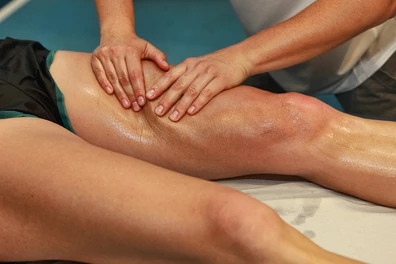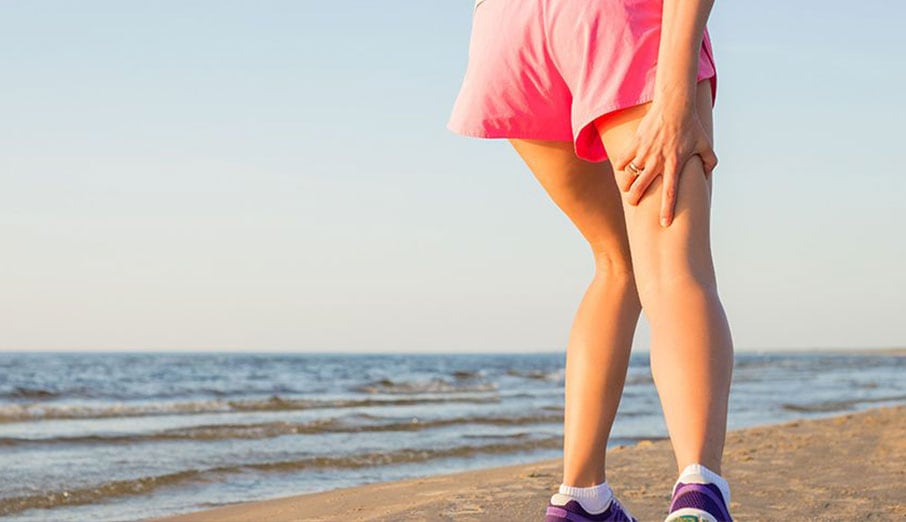The Pitfalls of Starting a New Exercise Program
March 13, 2019
Overuse injuries are common when you’re starting a new exercise regime, or increasing your exercise load.
It can be disheartening. You think you’re doing the right thing by starting an exercise program, and then shortly after starting you’re struck down by an injury.
Overuse injuries are different to acute injuries like muscle strains or joint sprains, in that the pain is the result of irritation of a structure which has been placed under cumulatively more load than what is able to deal with. Common examples include Achilles tendinopathy, patellar tendinopathy, patellofemoral pain, ITB friction syndrome, lateral hip pain and loading-based lower back pain.
The good news about these types of injuries is that there is no structural damage, and so you are usually able to continue to exercise providing the pain is manageable. The bad news is that they don’t follow as clear a recovery path as a sprain or strain injury.
Why do we get overuse injuries?

Structures in our musculoskeletal system are designed to deal with load. Being exposed to load stimulates the cells in these tissues to arrange themselves to better deal with load. After a period of not dealing with as substantial a load, the tissue will decondition, and therefore not be as able to deal with this load.
This system works best when you’re slightly increasing your training load. The tissue is placed under slightly more load than it is used to dealing with, it is stimulated to become stronger, and so the cycle continues.
Where the system runs into trouble is with substantial increases in the load the tissue is placed under. The tissues response to this may cause pain and weakening of the tissue. This creates a vicious cycle where the tissue is less able to cope with load, is therefore more easily irritated and is then made weaker.
How can we avoid getting overuse injuries?
Your risk of developing overuse injuries is reduced if you have sensible increases in your exercise. Be conscious that you’re likely to be deconditioned if you’re returning to a type of exercise after a long absence, and start off doing lighter exercise than you used to. When you’re finding the level of exercise you’re doing is getting easy, increase the load by no more than around 20% at a time. This might represent the increase in the weight you lift, the number of reps that you perform, the distance you run, the pace you’re running at, the length of time you’re exercising for etc.

You might be able to reduce your risk of injury by getting an injury prevention screening prior to beginning an exercise regime. Many overuse injuries share common potential contributing factors. A thorough assessment of these, and specific exercises to correct any issues may be of benefit to reduce your risk for developing any of these injuries.
What do I do if I start to get pain?
It can sometimes be difficult to determine if pain is due to an overuse injury, or just normal pain following exercise.
Post exercise pain (usually called DOMS) is usually on both sides, comes on the day following exercise and is at it’s worst the second day following exercise. DOMS is pain from the body’s normal response to an increase in exercise load. It’s annoying, but it’s a “good pain”. Massage helps you to recover more quickly, and icing, stretching, foam rolling and staying well hydrated are likely to help as well.

If your pain doesn’t fit this pattern, you should treat the pain like an acute injury following exercise. Apply ice for 15 minutes every two hours, rest and elevate the area.
See our physiotherapist in Aubin Grove to assess, diagnose and treat the condition. Treatment often involves a combination of hands on techniques and taping to reduce pain, and exercises to correct the causative factors.
As mentioned earlier in the post, you usually don’t need to completely rest from exercise. Because there is usually no structural damage with these injuries, you may continue to train through a mild to moderate pain if you’re able. A reduction in your overall exercise load is a potential tool for the management of the condition, but we try to keep you exercising!
Wouldn’t it be easier to just give up on exercise?
Sure, it’d be easier. But where’s the fun in that?!
Remember, there are huge amounts of benefits to exercise. Check out this blog post from last year to remind yourself just how many, and how wide-ranging benefits there are.

-
 What Can Make Neck Pain a Headache?
What Can Make Neck Pain a Headache?
Often people experiencing a headache are also experiencing neck pain/tightness a...
-
 How Physio Can Help Your Headaches
How Physio Can Help Your Headaches
Headaches are no fun. Some people will only experience short-term headaches ever...
-
 Muscle Strains
Muscle Strains
Winter sports are back and with them come more muscle strains, particularly hams...
